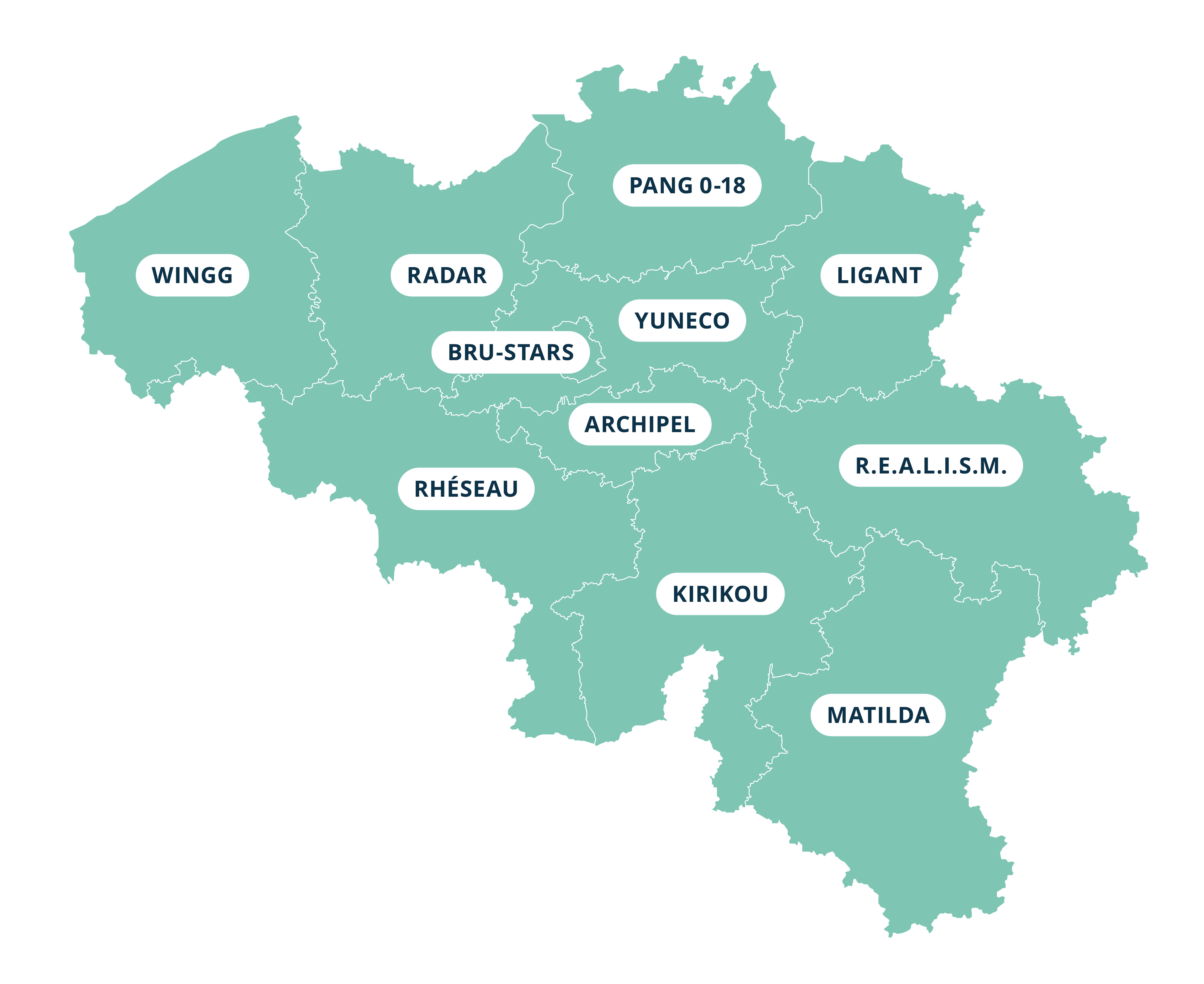On March 30 2015, the Interministerial Conference on Public Health (IMC) approved the “Guide to a new mental healthcare policy for children and young people (MHCY)”. This drew the outlines of a comprehensive and integrated mental health policy for children and adolescents.
It is a comprehensive policy, on the one hand because it covers health promotion and prevention, to primary care and outpatient care, through to highly specialised residential care, and on the other hand, because it is intended for all children and adolescents aged 0 to 23 years. It is integrated because it seeks the seamless collaboration of facilities and providers from mental health, broader healthcare and societal aspects.

Eleven networks were set up almost immediately under the MHCY Guide, focusing on children, adolescents and young adults. The areas of operation of these networks correspond to the territories of the provinces and the Brussels-Capital Region[1].
The aim is to respond to the needs of these children and adolescents and their context or environment with the fastest and most continuous care possible. Each network consists of all the relevant actors, services, institutions, care providers, etc. of the sectors involved working together and coordinating their policies.
To optimise assistance, the MHCY networks are developing a number of programmes and modules funded by the federal government.
More specifically, it concerns:
- Programmes of crisis care and long-term care in which places for short-term care and acute treatment of adolescents in a non-life-threatening crisis situation with associated case management are provided in addition to a mobile offering.
- There is also investment in expertise and knowledge exchange between all actors involved regarding:
- individual children, adolescents and their context;
- specific sub-target groups of adolescents
- concerning all children and adolescents within the MHCY area of operation.
- We can then consider this to be an intersectoral consult and liaison programme and learning networks.
- In addition, dual diagnosis modules are being established in which customised care pathways are provided for children with intellectual disabilities combined with psychological problems, including crisis offerings and time-out options.
In addition, child and adolescent psychiatric hospital services, as well as forensic psychiatric units for adolescents, have also been strengthened with the addition of more staff. They not only contribute to the optimal operation of those services but also provide ‘bridging functions’ of care delivery and care transmission. This means that young patients are supervised even before their admission to a psychiatric hospital service and their departure is prepared from the start of admission.
To curb patient flow to these services, liaison teams are also deployed. They consist of psychiatrists, psychologists and psychiatric nurses, and provide counselling and care in non-psychiatric hospital services, e.g. paediatrics and emergency departments. They also provide support to caregivers in these non-psychiatric hospital services.
The MHCY networks are also given the means to realise innovative projects within cross-programme sites, ranging from additional forms of liaison where teams with psychiatric expertise provide care in non-psychiatric hospital services to the creation of pilot projects for adolescents in transition up to age 23.
More than 700 additional FTEs are being made available to the networks in order to realise all of these programmes, modules and projects.
Finally, the MHCY networks are driving the expansion of psychological care offerings in primary care for children and adolescents (see below).
[1] In the German-speaking Community, through a specific pilot project, a network is currently being created that will provide follow-up and care for all age-based target groups: children, adolescents, adults and the elderly.